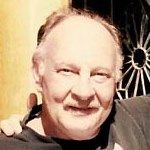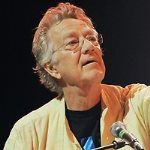While I have other songs that I like better: let’s have a look at the 1966 classic “Light My Fire”, after the jump …
With the recent death of the Doors keyboard player Ray Manzarek, the spotlight was shown on the band for the first time in a few years. And I recalled a radio interview Ray gave to Terry Gross of Fresh Air (after the publication of his memoirs several years ago) because one aspect he covered in detail was how Light My Fire was put together in the rehearsal space …. almost like a jigsaw puzzle.
The song was named as one of the NPR 100 - the 100 most important American musical works of the 20th Century – by National Public Radio just before the turn of the century. Not only due to its being an international best-seller, but also because its song length helped change the prevailing radio practices of the time, as we will see.
First, though, the song had to be written. And although early in the band’s recording career one read “All songs written by the Doors, except as noted” (in the case of, say, “Alabama Song”) … as was noted in the Jim Morrison biography No One Here Gets Out Alive ….“This was, essentially, Robby’s song”.
Robby Kreiger was The Doors’ guitarist and had studied flamenco music in his youth, primarily via albums issued on Elektra Records. Thus, when The Doors received a recording contract offer from Elektra years later, Robby’s vouching for the label was one reason why the band decided to accept (after having been signed-and-dropped by Columbia). At age 67 today, Robby is still an active musician.


And how about this: the first song the man ever wrote became a world-wide hit, basing the concept on one of the Four Elements (earth, air, fire, water). But it needed work, because Robby had written the (flamenco-inspired) music for two verses and the chorus, and most of the lyrics – but had neither an intro, nor ending …. and hadn’t even thought of an instrumental break.
The Oliver Stone film of The Doors does try to recreate the rehearsal session where the song came together, although it was somewhat vague. On the aforementioned radio interview, Ray Manzarek (with the use of an in-studio piano) fleshed-out the entire process. Do listen to this interview – but here is a quick recap of when Robby showed his bandmates what he came up with:
1) The flamenco minor chords were a big hit with everyone.
2) The lyrics needed a little extra work; it was Jim Morrison who came up with the “funeral pyre” line.
3) Robby originally had the music for the chorus in - as Manzarek recounted - a syncopated, Sonny & Cher mode. That was derided and quickly changed to the major-chord, rock-n-roll mode we hear today.
4) As for an instrumental break: in late 1966, the band wanted to stretch-out and play some extended solos. Both Ray and drummer John Densmore were jazz aficionados, and quite enamored of the saxophonist John Coltrane’s rendition of My Favorite Things (from five years earlier) – so the band adapted that into Light My Fire’s instrumental break.
5) Finally, for an intro: Ray dove into his classical piano training to base it on the Circle of Fifths - and this served not only as the song’s intro, but also the turnaround (from the instrumental break to the main verse) as well as the song’s ending.
When the band went into the studio in 1966, the song was originally meant only as an album track (in no small part due Light My Fire’s length of seven minutes) and the song was not issued as a single when their debut album The Doors was released in January, 1967 (it was, in fact, Break on Through that was their first single release).
But after a few weeks, many DJ’s began playing the song, despite its length. One was Los Angeles jockey Dave Diamond – who showed the band letters he received from avid listeners, telling them “they were nuts” if they did not release it as a single.
But given the demands of the AM radio industry for 2-3 minute songs, what to do about the length? Elektra president Jac Holzman threw it into the lap of his veteran producer Paul Rothchild - whom the surviving members of The Doors describe as “a member of the band” (along with recording engineer Bruce Botnick). Rothchild argued against re-recording a short version, and decided to simply cut parts of the song out.


As recounted in Ray’s radio interview, the bandmembers were nervous about what they would hear when Rothchild announced he had finished his editing. And though they were upset (very upset) when they found that Rothchild had nearly eliminated the instrumental break, they were persuaded to let it be released, as the band would gain an enormous audience with its release.
Although the band would have some more hit singles, it was Light My Fire that became the band’s signature tune that helped lay the groundwork for future success – becoming a #1 hit in the US, Canada and Ireland.
As previously noted, the song (along with other lengthy tunes such as “Like a Rolling Stone”) helped change the recording industry. Most radio stations (other than Top 40-only stations) began to play the full-length version, one reason why it made the NPR 100 list. Indeed, as a teenager, that was my way of differentiating between good and bad radio stations: did they play the full-length version …or not?
Another reason the song became an international classic happened the following year – when it helped launch the career of a blind musician from Puerto Rico to international fame. José Feliciano was a twenty-three year old singer/guitarist who performed the tune in a softer, more Latino-oriented fashion. It reached #3 in the US, #1 in Canada and #6 in Britain.
It also led to the invitation for Feliciano to sing the National Anthem at a 1968 World Series game in Detroit, which was the first time anyone had sung it in a non-traditional way in such a public forum …. and garnered much criticism from conservatives (including my father, it should be duly noted). Today, his version seems rather tame compared to what one hears at such events.
Many subsequent renditions of Light My Fire have much more resembled Feliciano’s version, rather than The Doors …. and Robby Krieger has cited José as the main reason the song has endured.


One other noted cover took place in 1970, when the Welsh-born Dame Shirley Bassey recorded it. Twenty-nine years later, a French DJ remixed it into a dance record, which became a hit in the disco scene of the time.
Some other aspects of the song include:
a) The Doors were invited to perform it on the Ed Sullivan Show – the premiere TV stage for performers of the era. Ed Sullivan’s son-in-law was the show’s producer, and told the band that CBS would object to the line “We couldn’t get much higher” (afraid of a drug reference). Earlier that year, the Rolling Stones had agreed to alter the title of “Let’s Spend the Night Together” to Let’s Spend Some Time Together at the show’s request. The Doors, though, sang an altered lyric in rehearsals, but Jim Morrison used the word “higher” live …. which earned them a ban from the show.
b) The Buick division of GM offered the band a lucrative offer to use the song’s title in an advertising campaign – which was acceptable to the other band members but not Jim Morrison (who called the song “sacred”) even though he had tired of performing it publically. It is also the final song Jim Morrison sang before his death in 1971.
c) The Doors did not have a regular bassist, as they had tried out many in auditions early-on, before keyboardist Ray Manzarek discovered the Fender Piano Bass – which enabled him to add a bottom end to the band’s sound live. But they did utilize studio bassists from time-to-time, most notably Doug Lubahn – who was well-liked by the band enough to receive a performer credit on the three albums he was used on. Later, Lubahn turned down an offer to join the band (as he was committed to another band).
In recent years, the prolific (and legendary) L.A. studio bassist Carol Kaye has claimed that she performed on the basic track for Light My Fire (though this is far from certain).
d) Finally, with the 40th anniversary re-mastering of the album: recording engineer Bruce Botnick had been previously informed of a speed discrepancy on the original album track. A Brigham Young University professor noted that the original album track was 3.5% slower than both the single (and the way the band performed the song publicly). Botnick was unaware of this, and as band producer Paul Rothchild had died in 1995, he was unsure how it had been released this way. But Bruce Botnick made the adjustment for the 40th anniversary re-release.


Besides the NPR 100, Light My Fire was also named as a Grammy Hall of Fame song and named as #35 on Rolling Stone’s 500 Greatest Songs of All Time. If you tune into a classic rock station near you ….. chances are, you will hear this song played in the near future.



As I’ve said all along, do have a listen to the late Ray Manzarek’s radio interview about the song (using a piano) at this link …… much better than reading any summary from me.